Spring weather can be a welcomed break from the cold, dreary winter days, but increases in wet conditions, plant growth, and insect emergence can lead to a variety of skin conditions for horses. Bacteria, funguses, and other microscopic irritants can affect compromised skin, but attention to management practices and good hygeine can keep issues at bay. Interact with the hotspots in the month’s feature to learn more about common skin issues affecting horses during the spring season.
Image Credit: Misty Peters featuring Ima Genuine Fly Girl.
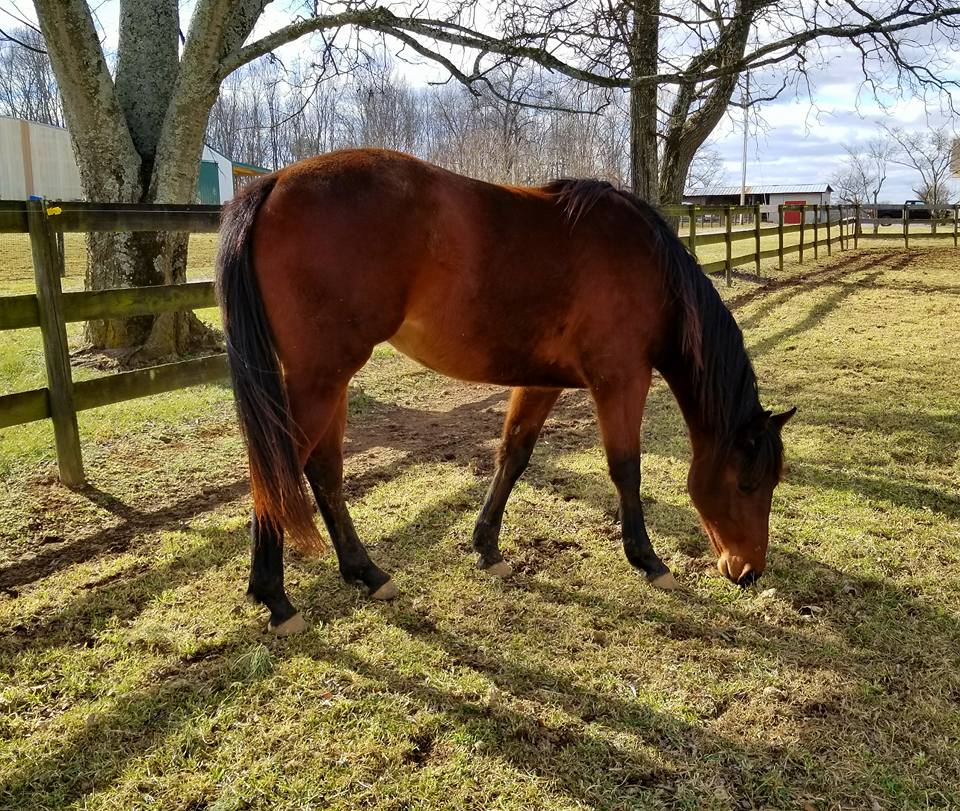
Photosensitivity
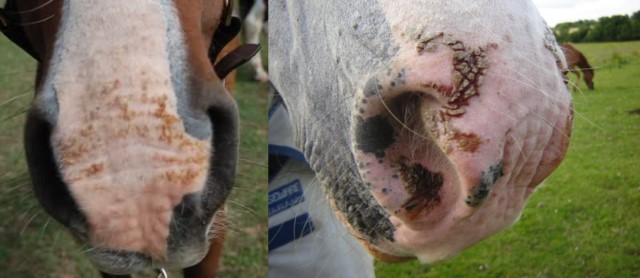
Reddened skin and crusty scabs occurring on pink or lightly pigmented skin are indicators of photosensitivity. Horses are susceptible to increased photosensitivity if they ingest plants containing phytodynamic agents that cause damage to the skin when exposed to UV light. Liver damage can also cause photosensitivity. Check pastures for plants known to increase photosensitivity risk, or that can cause liver damage if ingested. Cover affected skin to block further damage, or keep horses out of sunlight until lesions heal.
Image credit Paullick Report.
Pastern Dermatitis
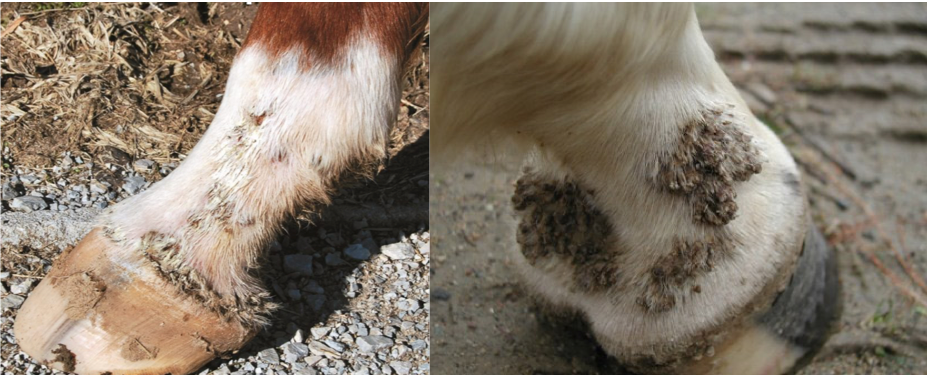
Also known as grease heel, mud fever, or pastern dermatitis, scratches affects back of the pastern area on the lower limbs. The skin in this area will become itchy, flaky, sensitive, and inflamed, and can lead to larger crusty lesions as the condition progresses. Most often, scratches is caused by bacterial or fungal infections, and is associated with horses standing in wet, muddy conditions for long periods. Remove horses from wet, muddy environments, and rinse/wash affected areas regularly to remove debris or scabs. Medicated shampoos can also be helpful to treat infections, and clipping long hairs on the pastern area can aid in medicating the skin directly.
Image credit thehorse.com.
Rainrot
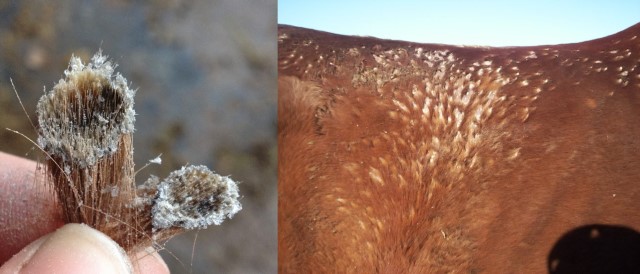
Rain rot, rain scald, or dermatophilosis are terms used to describe a skin infection caused by Dermatophilus congolensis, In order for horses to become infected, a trifecta of wet weather or skin, an opening in the skin, and the bacteria must be present. Rain rot is most commonly seen along the horse’s back and on the legs, and produces paintbrush lesions to form from crusty, ulcerated skin. Medicated shampoos, regular grooming, and keeping the horses skin dry can be used to treat mild symptoms and prevent infection. In severe cases, oral antibiotics and/ or steroids may be prescribed by a veterinarian. Rain rot can be spread from horse to horse, thus good hygiene practices are important to prevent transmission.
Image credit Horse Talk and Horse Forum.
Ringworm
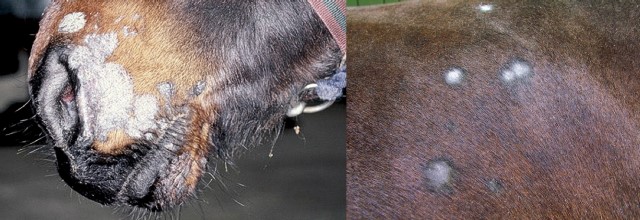
Most commonly caused by Trichophyton equinum, ringworm can be spread from horse to horse through contact with contaminated grooming supplies, saddle pads, blankets, stall surfaces, or other items that come into contact with the infected skin. Typically, red, scabby, flaky lesions are located on the face, chest, neck, shoulder, and girth area, but can occur anywhere on the body. Ringworm is zoonotic, meaning it can be transmitted to people, so use caution and wear gloves when treating infected areas. Visit with your veterinarian about treatment options, use good sanitation methods for grooming and shared equipment.
Image credit The Horse and Hound.
Sweet Itch
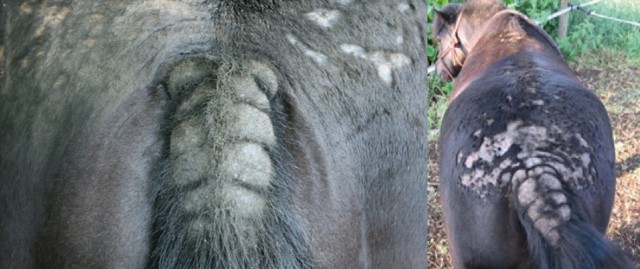
Also known as Queensland itch, or summer eczema, sweet itch is caused by a reaction to salivary antigens introduced to the horse’s skin from biting gnats or midges. The bites cause the horse’s skin to itch, leading to incessant scratching, hair loss, and skin damage. Often, horse’s skin will be hairless and be red or inflamed, especially at the root of the mane and tail, and/or on the face, neck, and belly where insects prefer to feed. Limit horse’s exposure to biting insects by removing insect breeding areas, keep indoor during insect feeding times, and use insect repellent as directed. Veterinarians may prescribe antihistamines, oral or topical steroids, or anti-inflammatory drugs for sweet itch outbreaks.
Image credit The Horse and Hound.